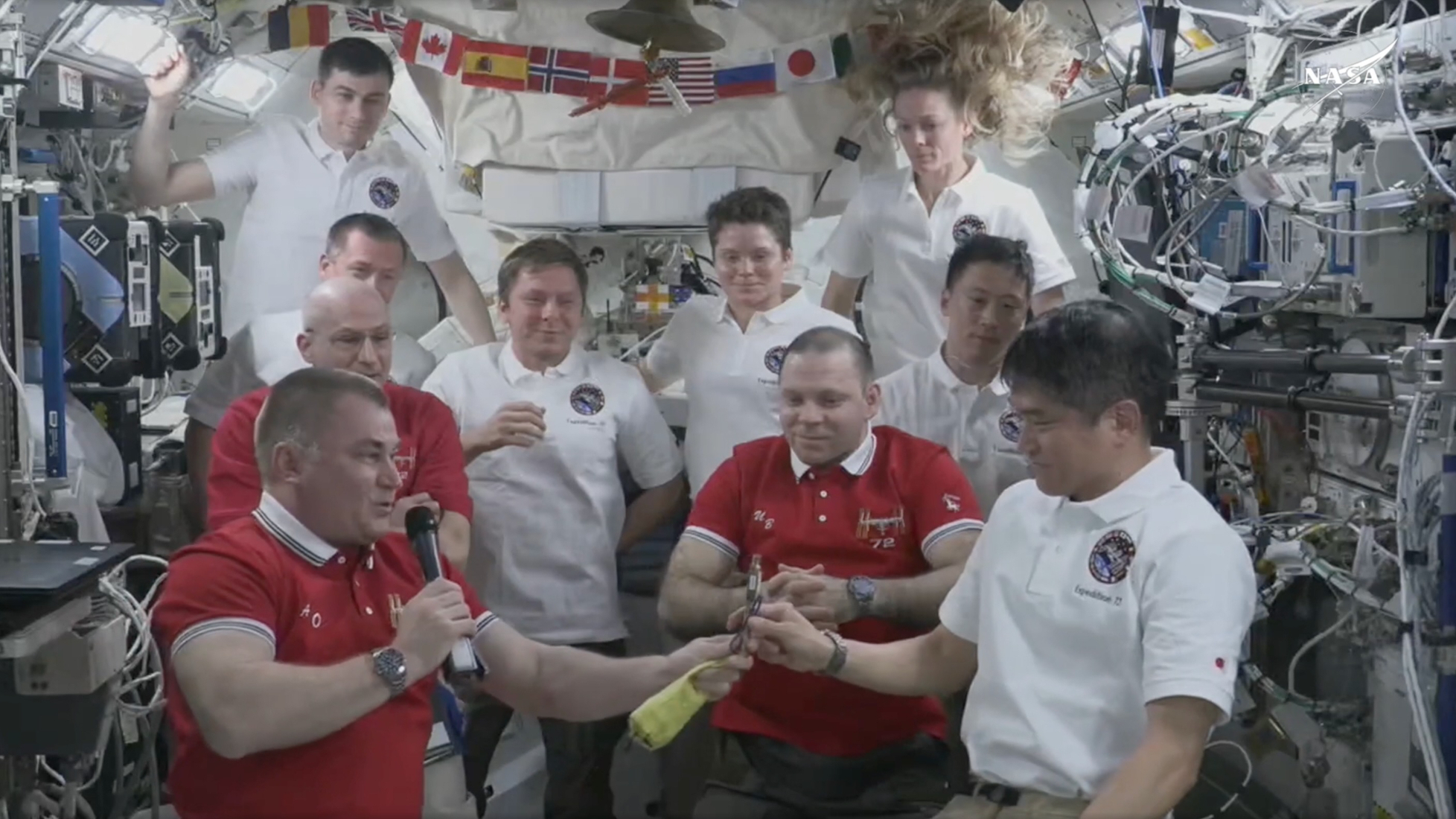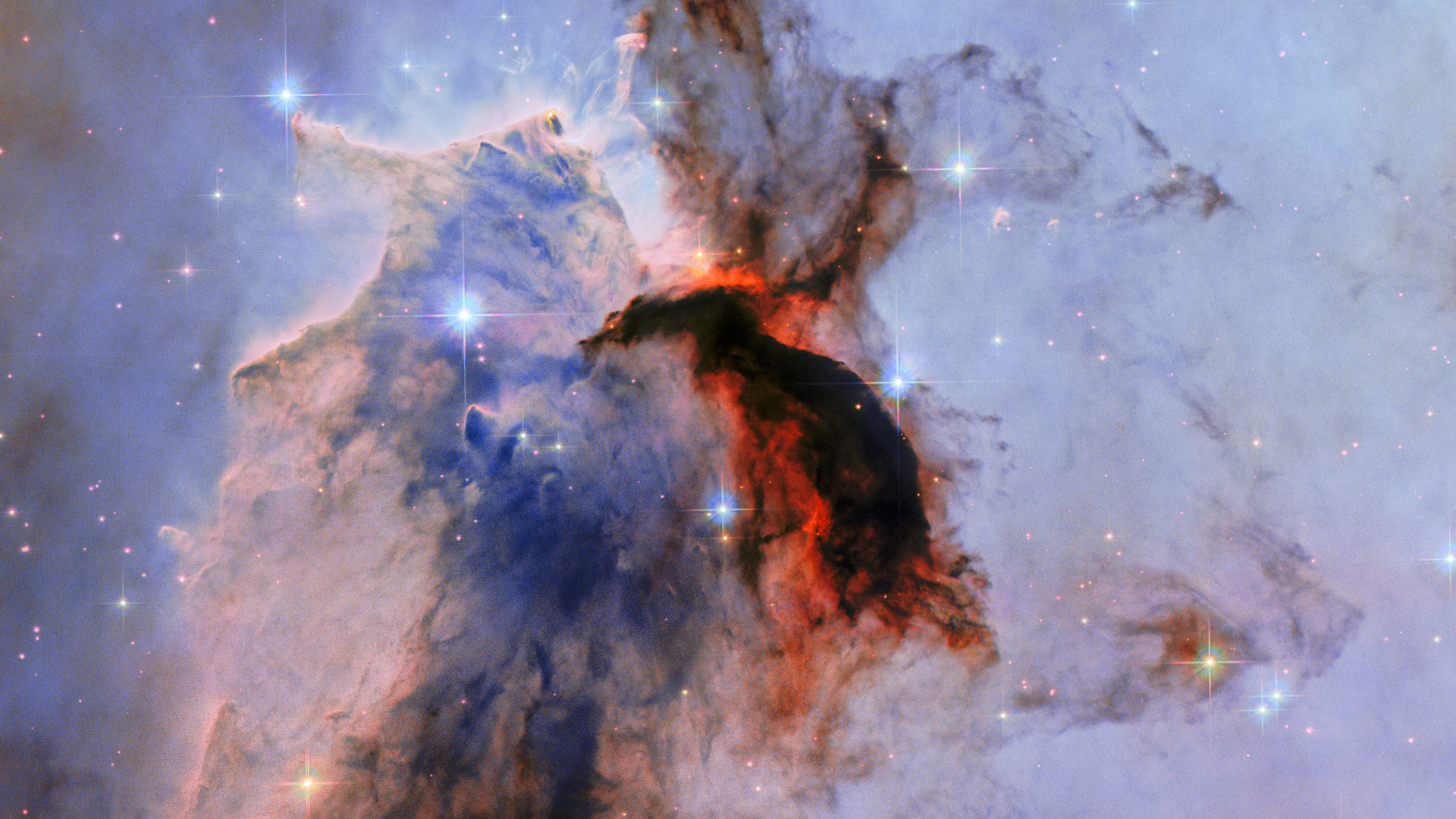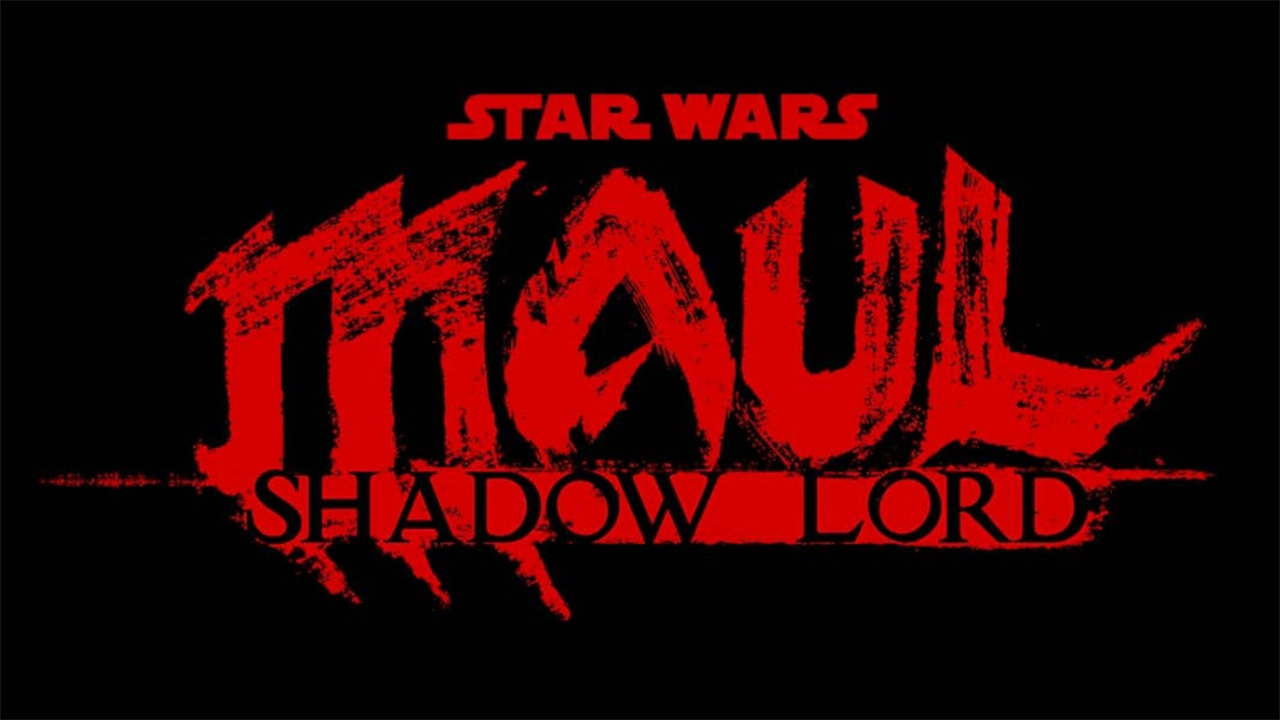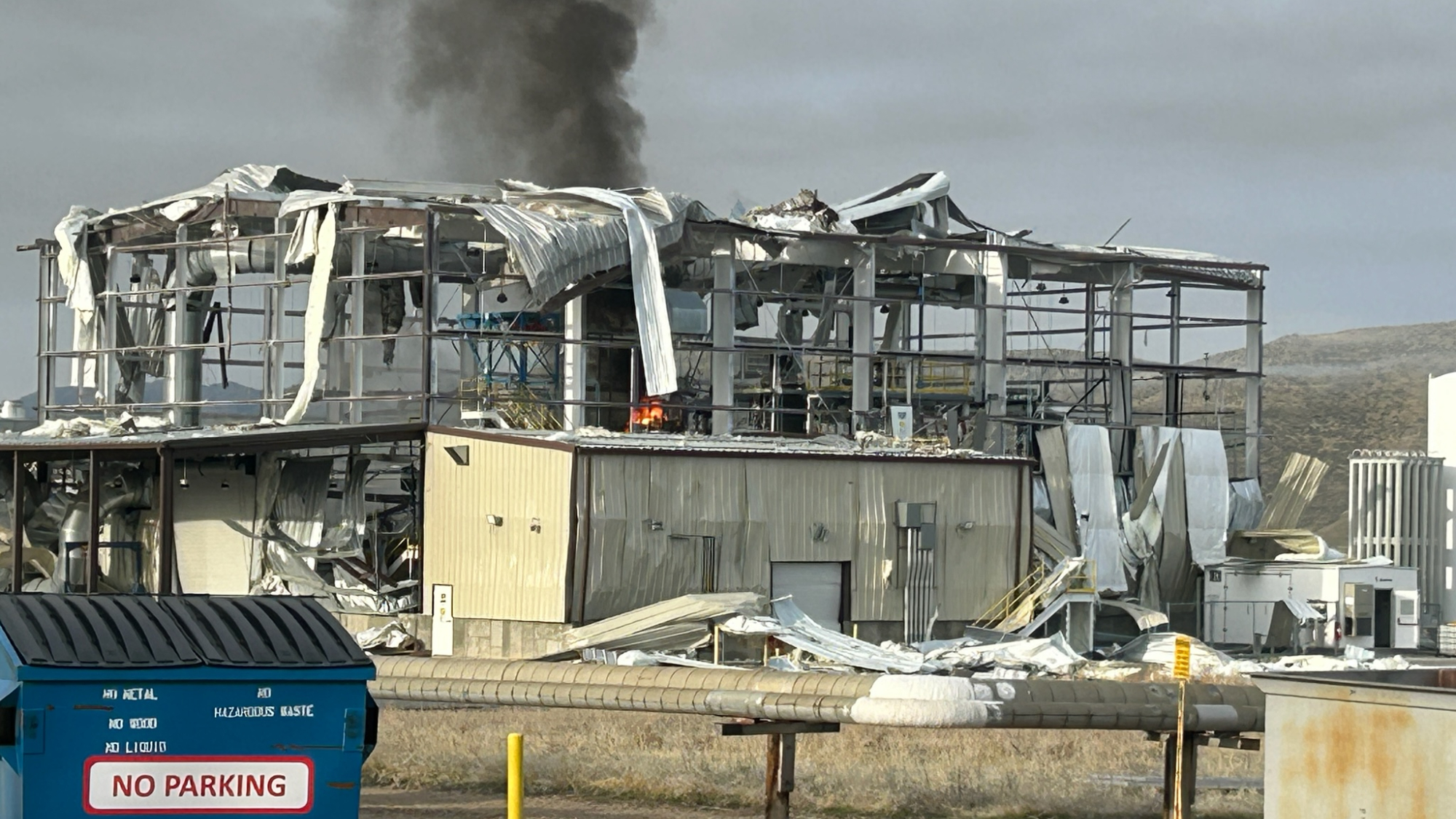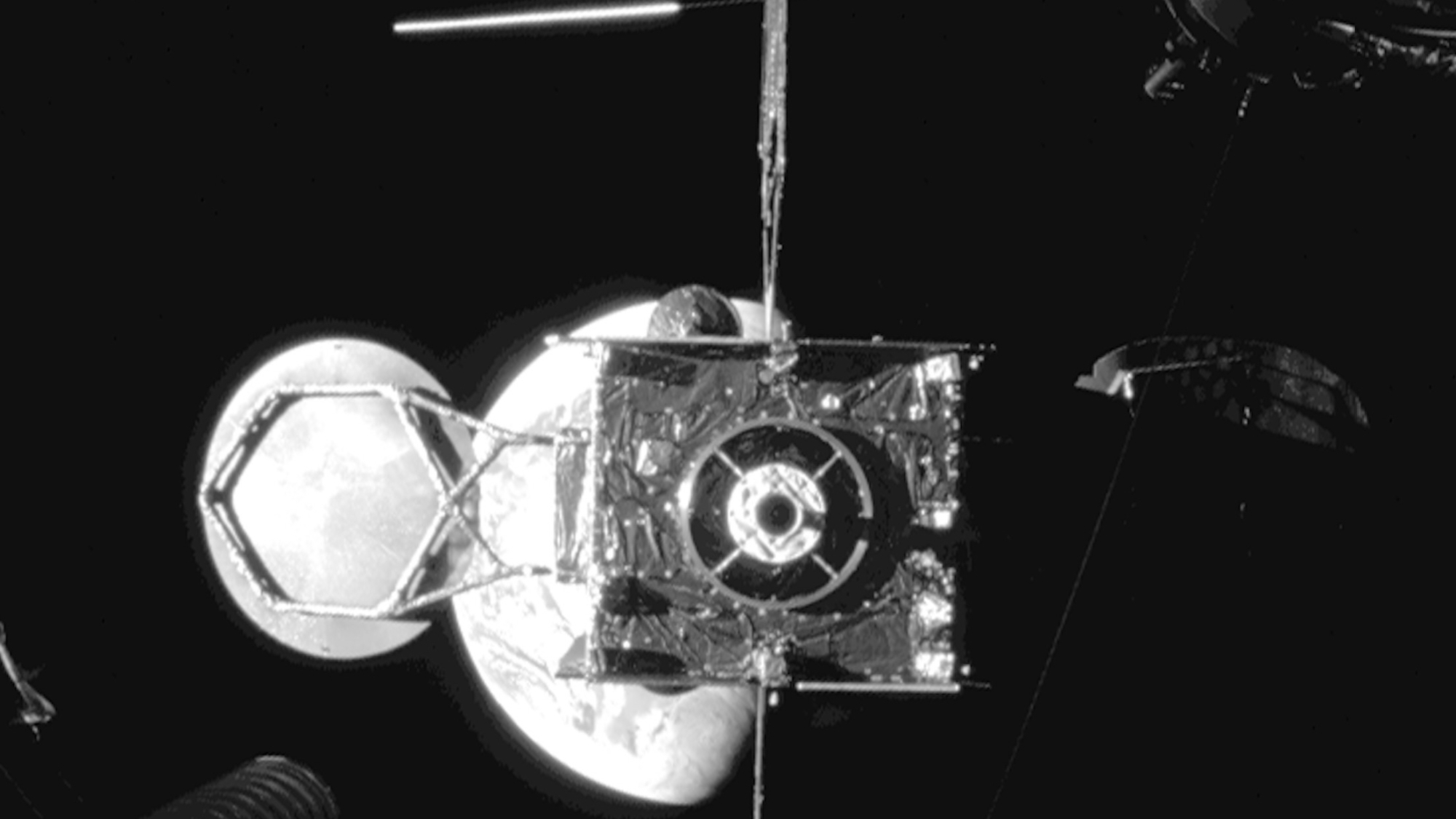Lost in space: Before SpaceX can 'capture the flag,' an astronaut had to find it
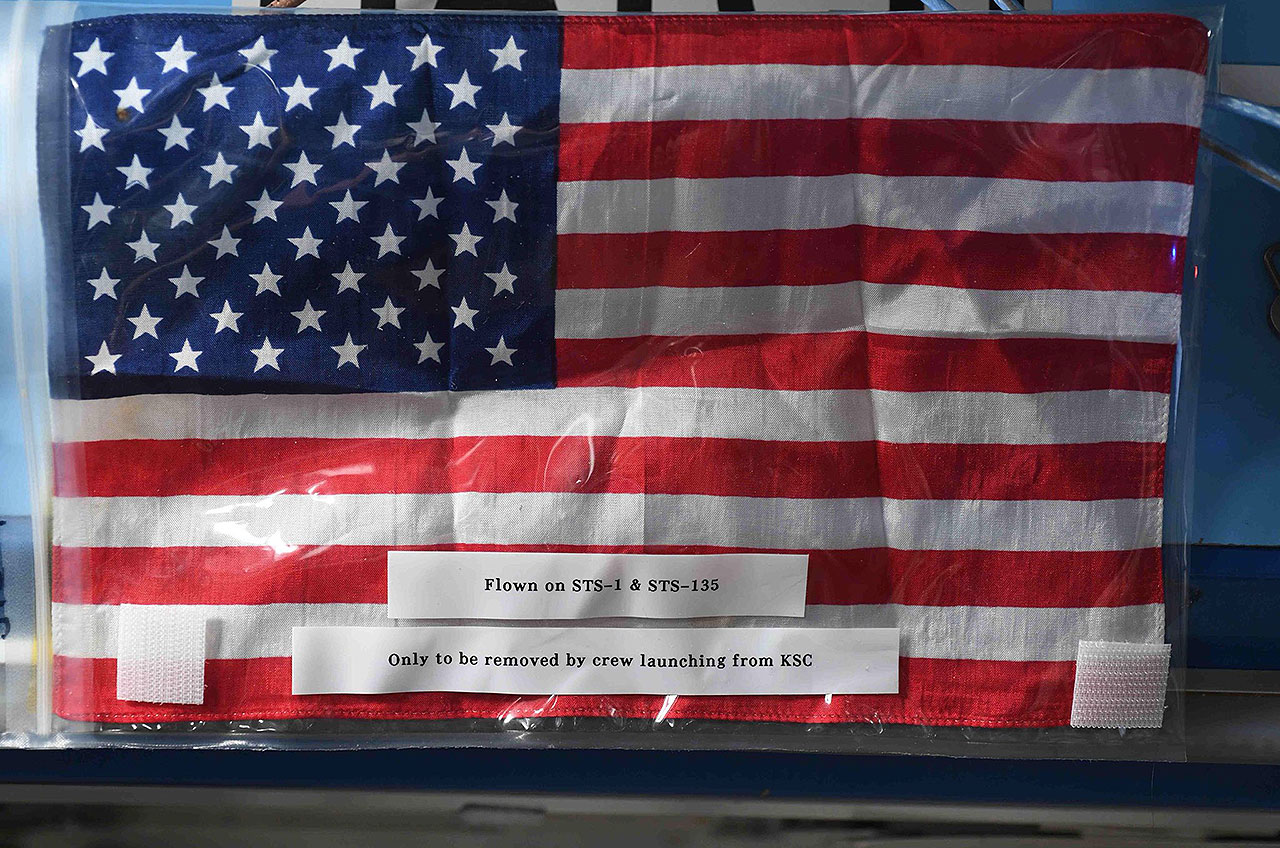
It might be the most high-profile, if not also the highest game of "capture the flag" ever played, but unbeknownst to many, the flag waiting to be captured by SpaceX's soon-to-be-launched first astronaut crew was briefly lost in space.
Soon after NASA astronauts Bob Behnken and Doug Hurley arrive on board the International Space Station later this month, they will claim a small American flag as a symbol of their success. The stars and stripes banner, which was left on the orbiting laboratory by the crew of NASA's final space shuttle mission in 2011, will be SpaceX's prize for becoming the first U.S. commercial company to launch U.S. astronauts on a U.S. rocket from U.S. soil in nearly a decade.
"The plan always was, or we thought it would be back in 2011, that the first U.S. vehicle to launch from Florida and come to the International Space Station (ISS) would grab that flag that flew both on STS-1 and STS-135, the first and last flights of the shuttle program," said Hurley, who was the shuttle's last pilot and is now the spacecraft commander on SpaceX's Demo-2 test flight of its new Dragon capsule.
Related: NASA missions and the American flag (photos)
"I think we will probably grab it from Chris [Cassidy, the space station's current commander] and put it in a safe place while we do our work on the space station. Then we'll bring it back when we come back later this summer," Hurley said at a pre-flight press conference on May 1.
Hurley and his STS-135 crewmates probably thought much the same thing, at least in regards to putting the flag in a safe place, when it was affixed to the hatch leading out to the space shuttle's — and now Dragon's — docking port nine years ago. It didn't take long, though, for that flag to migrate and ultimately, go missing.
From hatch to hallway to...
Launched in secret, the first time that the 8-by-12-inch (20-by-30.5 centimeter) American flag was seen in space was on July 15, 2011, during a call between the combined space station and STS-135 crews and then-President Barack Obama.
Get the Space.com Newsletter
Breaking space news, the latest updates on rocket launches, skywatching events and more!
"I understand it will be kind of like a capture-the-flag moment for commercial spaceflight," said Obama. "So good luck to whoever grabs that flag."
In addition to SpaceX, NASA also contracted with Boeing to launch its astronauts to the space station. Although NASA refrained from billing it as a formal race, it was not known until earlier this year which company would launch a crew first and capture the flag.
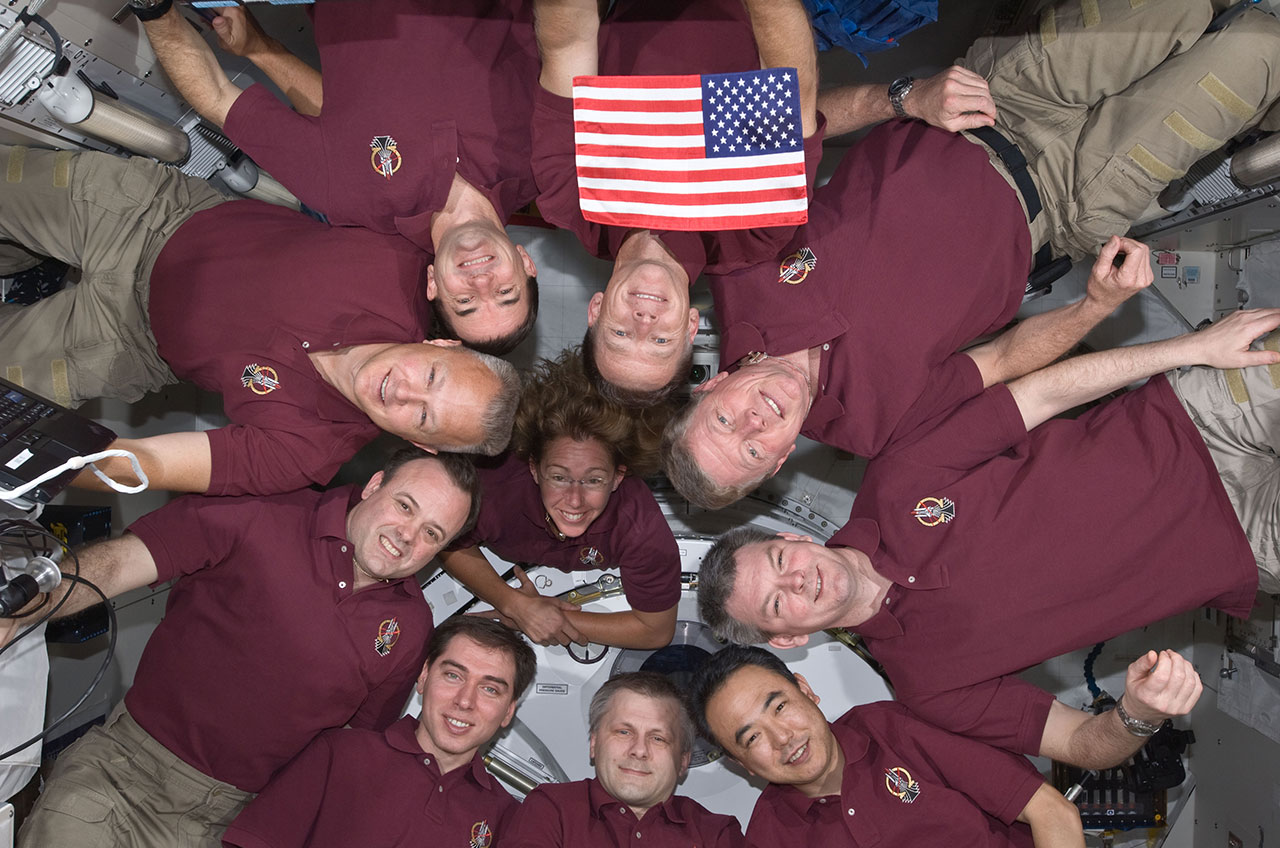
Three days after Obama's call, as the shuttle's crew was getting ready to depart for Earth, the astronauts hung the small American flag on the forward-facing hatch in the space station's Harmony node, positioned between STS-1 and STS-135 mission patches.
And there the flag stayed, or at least was thought to stay, for what was then expected to be just a few years until a new vehicle would arrive. Budget cuts and technical setbacks, however, delayed NASA's commercial crew program and with it SpaceX's and Boeing's efforts to begin launching astronauts.
As the years passed, the flag apparently began to drift. There are only a few publicly-released photos that capture the flag, but by May 2014, it could be seen in a clear plastic bag hanging on a wall adjacent to the hatchway where it had been.
The search begins
"I don't know the reason why it was moved off the hatch, but we're constantly using and reusing every area," NASA astronaut Scott Tingle, who was on the space station for 168 days from December 2017 to June 2018, told collectSPACE in a recent interview. "We're constantly moving [science and equipment] racks. We're pulling racks out and moving them into different modules and eventually you have to take everything down to be able to make those adjustments."
"It's impossible to put something up in one spot and expect that it's going to be there, even just a couple of months later," he said.
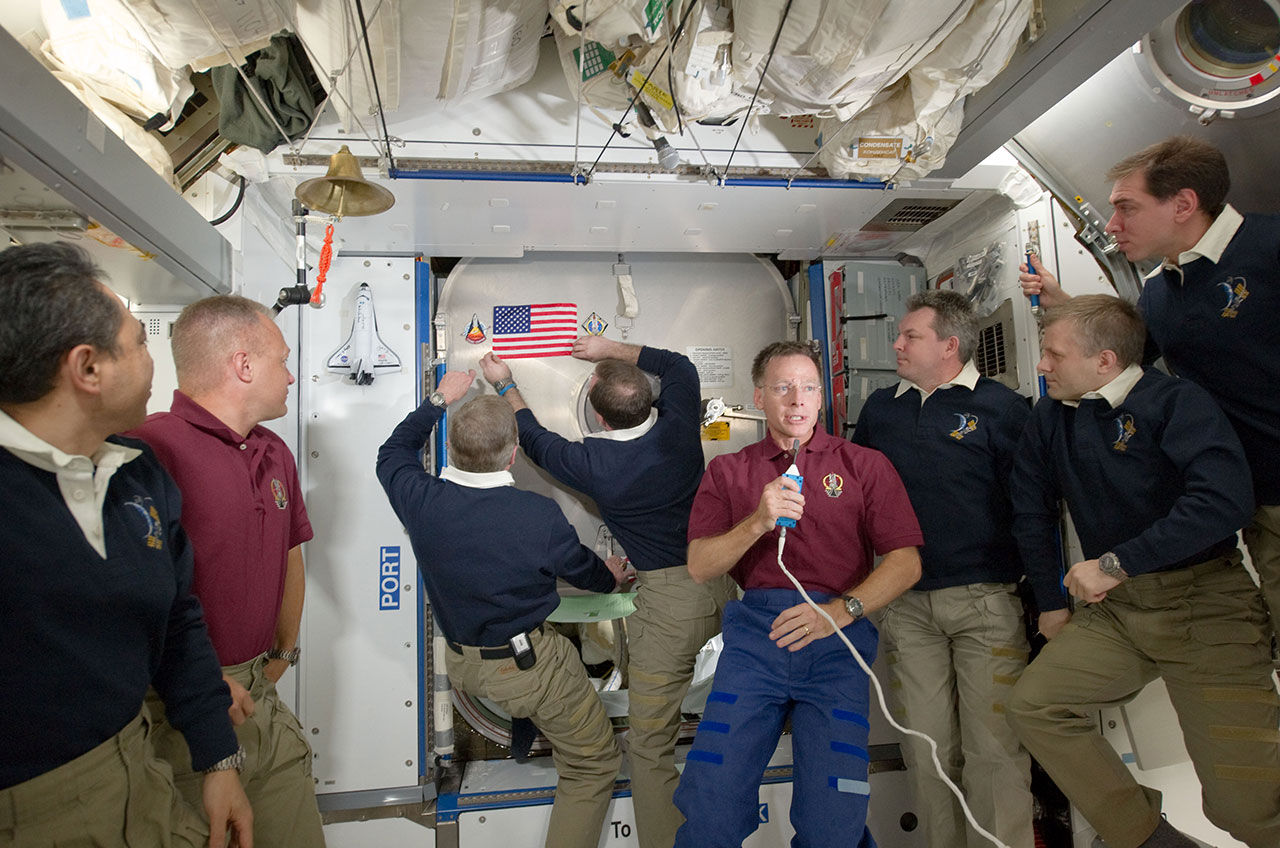
Sometime in late 2014 or early 2015, the space station's flight controllers must have realized this as well and called up instructions for then-crew member Butch Wilmore to put the flag into one of the many crew transfer bags (CTBs) that was used to hold supplies.
Flash forward three years.
Not only was Wilmore back on Earth, but 40 or so other astronauts and cosmonauts had cycled through the space station by early 2018. Tingle was now on board when a call came from the ground.
"We got a message from one of our astronauts mentioning that in preparation for commercial crew that they wanted to make sure that we still had the flag and could I go and find it?" he recalled. (Unbeknownst to Tingle at the time, the request had been triggered by a media inquiry from The Planetary Society about the status of the flag.)
But just like the flag during its first few years on the station, its CTB had also gone missing.
"We looked and looked and looked," said Tingle. "I talked to my fellow astronauts that were on board the ISS and everybody had a little bit of a different memory on where it could be or where it might be. So we spent probably three or four weeks just kind of scouring in our spare time, trying to find it."
NASA has a system and a team on the ground devoted to tracking items on the space station. Items are given barcodes and there are label makers for the crew's use. But with multiple areas devoted to storage and cargo coming and going on a regular basis, an item like a flag — even a historically- and symbolically-important flag — can slip out of sight.
"It's just the sheer volume of work that makes it impossible to track every single little detail that goes on up there," said Tingle.
The right stuff
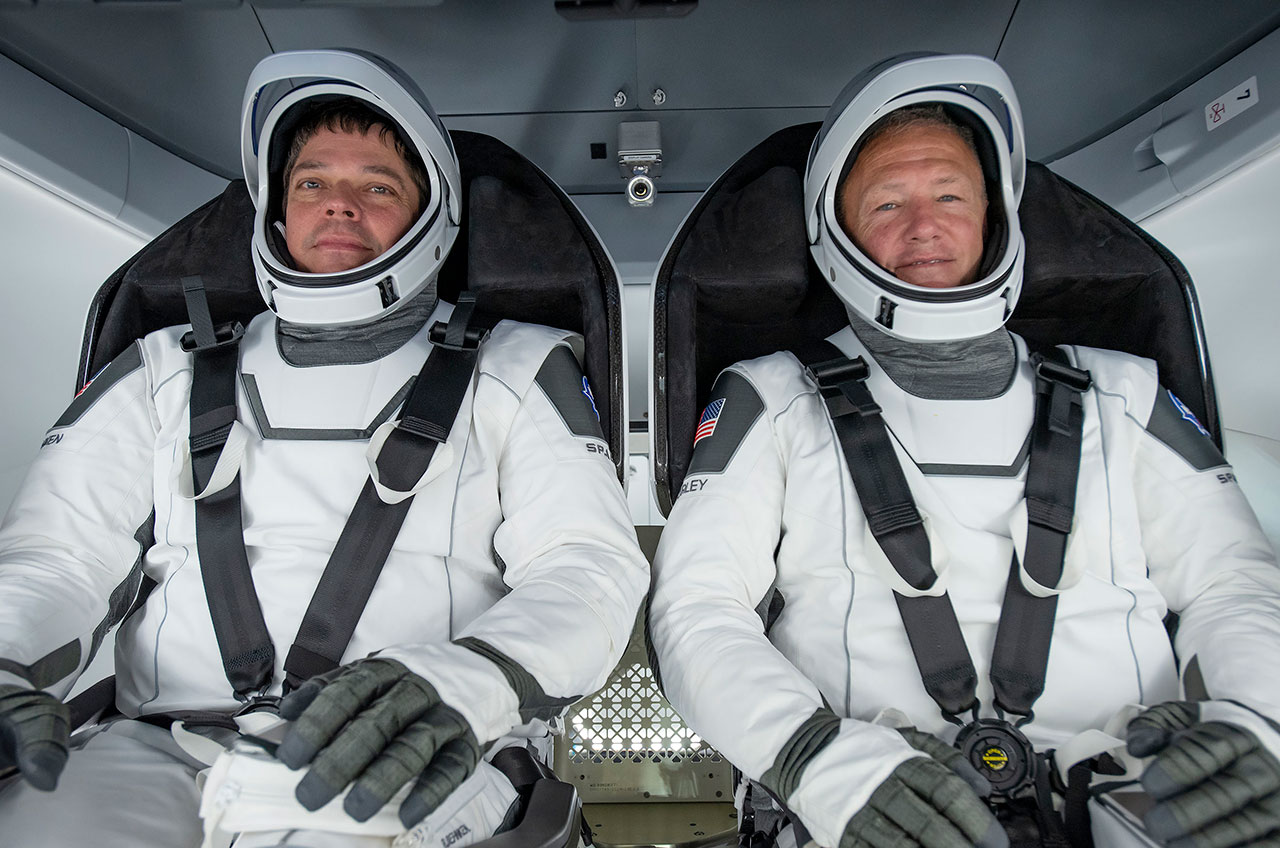
The flag Tingle and his crewmates were seeking — the flag that Behnken and Hurley ultimately will capture — was one of only 1,000 American flags of its size that flew on the first space shuttle mission and was the only such example left aboard the space station by the final shuttle crew. But it was not the only American flag on the space station in 2018.
In the course of the search, multiple flags were found. But was it the right flag?
"At one point, we ended up thinking that we just couldn't find it or maybe it mistakenly just got sent back home or thrown out or something," said Tingle. "So we ended up calling the person who last saw it and that was Butch Wilmore when he was up on the station."
"He told me exactly what kind of CTB it was in and what some of the other things that were in there with it," Tingle told collectSPACE, explaining how he identified the correct flag.
After weeks of searching, Tingle found the American flag in a transfer bag buried behind other bags at the edge of Unity, another of the station's connecting nodes.
Related: The International Space Station inside and out (infographic)
"Miraculously it was in the CTB that Butch mentioned. It was about, I don't know, a couple of meters away from where he originally left it," Tingle described.
The flag was now just a little worse for the wear. It had gained some creases from being folded up in the CTB.
"To me, it just adds character, because that's what human spaceflight is all about," said Tingle.
The flag's discovery came near the end of Tingle's stay on the space station and within a few weeks of his departure in early June 2018, the flag found a new semi-permanent home to the left of the hatchway leading from the U.S. Destiny lab into the Unity node.
Wrapped in a plastic bag, the flag is now labeled, "Flown on STS-1 & STS-135" and "Only to be removed by crew launching from KSC [Kennedy Space Center]."
Star-spangled banner yet wave
The history of U.S. space exploration is rich with symbolic American flags. The first U.S. astronaut to fly into space carried a large U.S. flag on his historic 15-minute spaceflight. Twelve Apollo astronauts left six American flags on the moon. And the first spacecraft to successfully land on Mars was emblazoned with the red, white and blue star-spangled banner.
For Tingle, the American flag now waiting to be captured on the space station is symbolic of a new chapter in U.S. space history.
"It means we're back," he said. "The last 10 years has been pretty hard. We have relied on our international partners. We have trained to facilitate that. We've made a lot of sacrifices to keep our space program up and running while we're developing new vehicles."
"Capturing that flag is an effort that has been an effort like no other," said Tingle. "We're back."
- In photos: SpaceX's historic Demo-2 Crew Dragon test flight with astronauts
- Space collectibles dealer offers to fly flags, name tags to space station
- The US Space Force now has a flag. Here it is.
Follow collectSPACE.com on Facebook and on Twitter at @collectSPACE. Copyright 2020 collectSPACE.com. All rights reserved.
OFFER: Save 45% on 'All About Space' 'How it Works' and 'All About History'!
For a limited time, you can take out a digital subscription to any of our best-selling science magazines for just $2.38 per month, or 45% off the standard price for the first three months.
Join our Space Forums to keep talking space on the latest missions, night sky and more! And if you have a news tip, correction or comment, let us know at: community@space.com.

Robert Pearlman is a space historian, journalist and the founder and editor of collectSPACE.com, a daily news publication and community devoted to space history with a particular focus on how and where space exploration intersects with pop culture. Pearlman is also a contributing writer for Space.com and co-author of "Space Stations: The Art, Science, and Reality of Working in Space” published by Smithsonian Books in 2018.In 2009, he was inducted into the U.S. Space Camp Hall of Fame in Huntsville, Alabama. In 2021, he was honored by the American Astronautical Society with the Ordway Award for Sustained Excellence in Spaceflight History. In 2023, the National Space Club Florida Committee recognized Pearlman with the Kolcum News and Communications Award for excellence in telling the space story along the Space Coast and throughout the world.




